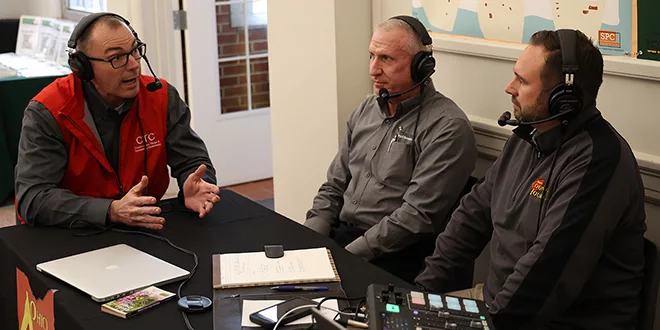While planter technology can keep a customer from losing bushels and dollars, it also pays to do a low-tech check of such high-tech equipment.
Precision technology experts John Fulton, a professor and extension specialist at Ohio State University, and Bill Lehmkuhl, owner of Precision Agri Services, talked with the Ohio Country Journal about planter technology in April.
Fulton and Lehmkuhl say a high-end display in the cab is the best bang for a farmer’s buck when it comes to planter technology. A good monitor allows customers to easily correct issues that cost bushels and money.
“We need to be monitoring that planter performance, and if we have an issue, we know about it instantly,” Fulton says. “We can address that issue whether it is on a meter or on a row unit or whatever. That is, without a doubt, the quickest payback.”
In Ohio’s variable spring conditions, downforce and monitoring the planter allow farmers to make adjustments on the go and address compaction issues if they occur.
“It is a form of autonomy as you go through the field as the row units are reading those measurements and changing the downforce every fifth of a second,” Lehmkuhl says. It makes a difference.”
Based on research from his farm, Lehmkuhl says if plants aren’t emerging uniformly within 12 hours, it’s costing yield. Downforce and a proper closing system are key to even emergence. He emphasizes that even with all of the technology on the farm today, farmers need to get off the tractor seat and look at what’s going on behind the planter.
“You need to dig and see what is going on,” Lehmkuhl says. “We have a battery-operated leaf blower out there to blow out 10 feet of trench to see what the closing wheel system is doing. Are we pinching? Are we creating a compaction zone with too much weight on the planter? Are we at the right depth? Just because your monitor tells you one thing, you need to make sure that is what is happening back there on the planter.”
Fulton is an advocate of using apps to monitor that everything is working properly before going out, including making sure the closing wheels are right for the conditions.
“I know we all hate to get out and change those, but there are so many options out there in the marketplace,” Fulton says. “I have seen so many times when we chose the wrong setup on our closing wheels.”
Fulton says his mind is already on scouting when he puts planters in the ground. He identifies what he’s scouting for, and collects as planted maps, downforce maps and other data.
“As we get into June and July and something comes up, having those maps available is great intel to get me to certain parts of the field to try and evaluate those circumstances,” Fulton says.



![[Technology Corner] A Big Step Forward for Interoperability & Data Sharing](https://www.precisionfarmingdealer.com/ext/resources/2025/12/12/A-Big-Step-Forward-for-Interoperability--Data-Sharing.webp?height=290&t=1765565632&width=400)


